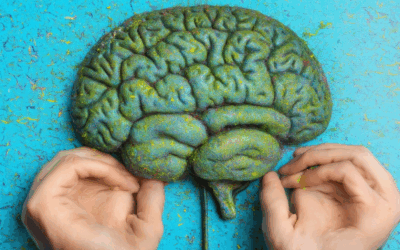Golden retrievers are loyal, loving pets. They can bond well with humans and other dogs. However, they can develop some health problems, including elbow dysplasia, hemangiosarcoma, atopic dermatitis, and von Willebrand disease.
Symptoms of von willebrand disease
Symptoms of von Willebrand disease are not always apparent. It may take a while to get diagnosed, and treatment depends on the severity of the condition. Patients with mild cases may not need any treatment, while others may require more complicated procedures. However, when diagnosed early, the chances of a healthy life are greatly increased.
The disease is caused by an imbalance in the clotting factor vWF. If your blood contains this protein, you are at risk for hemorrhage. It can also be caused by certain hormonal levels, which affect the blood’s ability to stop bleeding. There are several different subtypes of von Willebrand disease, so it is important to get the right type of treatment.
People with von Willebrand disease may bleed more frequently than normal, including nosebleeds that last long, and bleeding from the gums or joints. Women may also experience heavy bleeding during their menstrual periods or after giving birth. Patients may also experience severe swelling and pain in the joints. Some may also develop anemia.
Patients with von Willebrand disease can take prescription medications to help control bleeding. For example, an oral contraceptive or birth control pill containing estrogen will help prevent heavy periods. They can also take antifibrinolytics, which can help prevent blood clots from forming. During surgery or dental work, antifibrinolytics may also be prescribed. Birth control pills may also cause bleeding complications.
Symptoms of elbow dysplasia
People with elbow dysplasia are at a high risk for stress fractures in the ulna. The stress fractures are caused by abnormalities in the coronoid process, the bony part of the ulna. In a landmark study, Fitzpatrick Referrals found that the disease started in the bone beneath the surface and was not exclusively a disease of the cartilage.
The elbow is one of the most common joints in the human body, but it is also understudied. It is particularly complex, prone to injuries and secondary pathologies, and is a difficult area to study. Therefore, there is a growing need to better understand the etiology of elbow pathologies and to develop novel therapeutic approaches.
Symptoms of hemangiosarcoma
The occupational hazards of gold mining may pose serious health risks. Some workers may be exposed to toxic metals such as mercury and cadmium. Such exposures can cause serious health problems, including lung damage and death. Exposure to these metals is especially dangerous for children. Additionally, exposure to radioactive ores can increase the risk of certain cancers.
Symptoms of atopic dermatitis
Atopic dermatitis is a common chronic inflammatory skin disease with an estimated prevalence of 20% among children and 8% among adults. Its symptoms are characterized by persistent and highly pruritic eczematous lesions, lichenification of flexural folds, and an altered microbiome. The condition also increases the risk of viral infections and contributes to a decreased quality of life. Despite the fact that there are no known cures for atopic dermatitis, treatment is available.
Gold is an allergen and can cause systemic allergic contact dermatitis in susceptible individuals. Symptoms of this condition may appear up to three weeks after gold patch application and may persist for months. While the clinical relevance of gold allergy testing is low compared to that of other allergens, patients who develop a persistent allergic patch reaction to gold may require a skin biopsy to rule out other causes.
Symptoms of aortic stenosis
Although aortic stenosis is often asymptomatic, it can cause a dog to feel ill and need emergency medical attention. An electrocardiogram may be used to determine if your dog has the disease. It can also detect any enlargement of the left ventricle. Another diagnostic test is Doppler echocardiography, which shows the different chambers of the heart and can show abnormalities of blood flow. This test can also detect if there are any blockages of the aorta. If the condition is severe, a dog may show signs of heart dysfunction such as lethargy, exercise intolerance, shortness of breath, fainting, and other signs. All of these symptoms are related to the heart’s inability to pump blood effectively.
Dogs with aortic stenosis should not exercise heavily, especially if they are severely affected by the disease. This condition increases the risk of sudden death and should be treated as soon as possible. Fortunately, there is no cure for aortic stenosis, but there are treatments available for the condition.
Aortic stenosis in dogs occurs in two types: subaortic and valvular stenosis. Subaortic stenosis is a form of aortic stenosus, with severity ranging from mild to severe. If left untreated, the condition may lead to early death, although this is rare.
Symptoms of subvalvular aortic stenosis
Subvalvular aortic stenotic disease (SVAS) is a serious condition that restricts the flow of blood from the left ventricle. It is caused by fibrous tissue that forms beneath the aortic valve. This narrowing of the aorta restricts blood flow, which can cause a life-threatening arrhythmia.
Symptoms of SVAS vary from person to person, but typically include chest pain, shortness of breath, and eventually heart failure. Some affected individuals may also develop defects in other blood vessels. Genetics play an important role in developing SVAS. The condition is inherited autosomally, which means that it can run in a family. Some people with SVAS never develop symptoms.
Rheumatic fever is a condition that can damage more than one heart valve. However, rheumatic fever is uncommon in the United States. Infections of the throat, such as strep throat, can develop into a rheumatic fever if untreated. This disease is most common in children and young adults.
In children, calcium deposits on the aortic valve may not cause symptoms. However, they may cause problems as they grow older. In some cases, calcium deposits will cause the aortic valve to stiffen. In such cases, the aortic valve may eventually need repair or replacement.




0 Comments